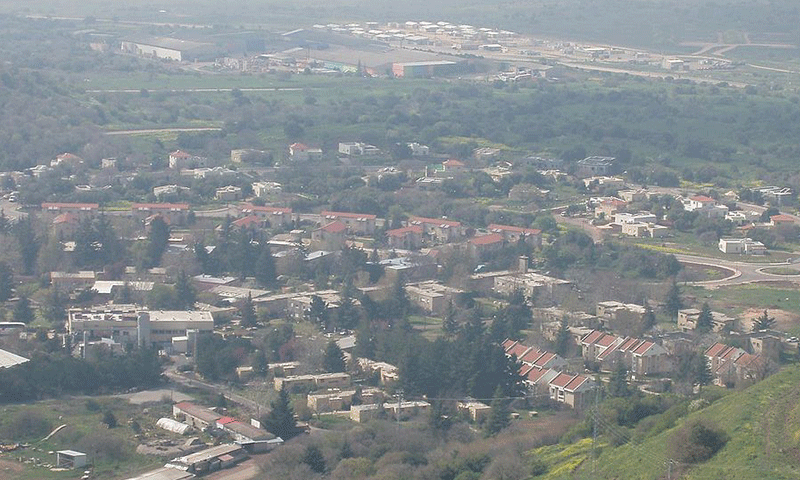



On 5 June 1967, the southern Syrian border experienced mutual artillery and air bombardment with Israel along the borders of the Golan Heights, in conjunction with a failed penetration attempt from the Syrian side, within the “Six Days” war, which is also known as 1967 Arab–Israeli War,
This led to the declaration of the fall of Quneitra under the statement “NO.66,” at which time its residents sought refuge in the surrounding villages because it was considered as a “military zone” and the Israeli occupation annexed the Golan as part of its borders.
One month after what was known as the Naksa (Setback) in 1967, the General of the Israel Defense Forces (IDF) and Northern Front Commander, David “Dado” Elazar permitted a group of “kibbutz” (a residential grouping that includes a group of Jewish workers) deployed in the city of Galilee, north of occupied Palestine, to go to the Golan Heights and settle in the camp “al-Alika” in the center of the Golan. They stayed there to determine the places on which the first settlements would be built in the future.
At that stage, the Israeli authorities officially began the establishment of the first settlements in the Golan. Since the first day of the occupation, Israel has declared that the Golan is a closed military zone, which people are prohibited from entering.
On 16 July 1967, the first Israeli settlement in the area named “Merom Hagolan” was built and moved to its current location near Tel al-Gharam (Har Bental) in March 1972, within the territory of the Golan.
The area of the settlement is 45 thousand dunums of Quneitra lands, of which 2,500 dunums are for cultivation, and an area of 3,300 dunums are pastures.
The name “Merom” is a Hebrew name meaning “high” and thus, the Arabic meaning of the name of the settlement becomes “Golan Heights” after it was called “Kibbutz Golan” previously.
“Merom Hagolan” has become an ideological-settlement approach that viewed all future settlements to be established on the Golan Heights. The first Israeli Prime Minister, David Ben-Gurion, in the late 1970s stated that: “It is necessary to establish twenty Jewish settlements on the Golan Heights as soon as possible in addition to the existing settlements. I think the establishment of new settlements is one of the most successful means that keeps this height under our control. The world would not then expel the Jews from this region.”
The Syrian Golan has been under Israeli occupation for 53 years, which resulted in the displacement of tens of thousands of Syrians who had fled their homes in the Golan in disputed circumstances to other parts of Syria during the Six Days War. However, Israel, since then, has prevented their return.
In 1981, the Israeli government unilaterally applied its own laws in the Golan Heights, a de facto annexation that the United Nations Security Council condemned in Resolution 497 as “null and void and without international legal effect.”
The UN Human Rights Council has adopted many resolutions confirming this position, most recently in March 2019, that the Golan Heights are “occupied” under international law.
Furthermore, the Israel government offered all Syrian people living in the Golan citizenship, but the offer was largely rejected, according to “Human Rights Watch.”However, this does not change the fact that the Golan Heights remains “occupied.”
An occupation continues as long as the occupier still effectively controls the territory, and there is no widely accepted political settlement changing that status. Israeli authorities have established 34 settlements in the Golan Heights, housing at least 26,000 settlers, in violation of international humanitarian law.
In a report to the Human Rights Council session, in March 2019, the UN High Commissioner for Human Rights noted that “the Syrian population in the occupied Syrian Golan continues to face challenges due to discriminatory planning and zoning policies that favor illegal Israeli settlements. These policies make it nearly impossible for Syrians to build, plan, or expand their homes and infrastructure for their villages.”
if you think the article contain wrong information or you have additional details Send Correction